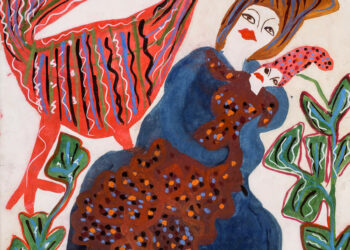Between Chaos and Paradise

Installation view of ‘Taste of a Distant Paradise’ by Douglas Knesse at Cape Town Art Residency. Photographer: Julia Neves
For many, art is more than just strokes on a canvas; it’s a medium through which the soul speaks, a conduit for emotions too profound for words. Such is the case for Douglas Knesse. Growing up amidst the vibrant tapestry of street culture in Rio, Brazil, he was shaped by the influences of his environment. Yet, amidst the hustle and bustle of city life, he found solace in the silent language of art.
As I sit down with Knesse at the Cape Town Art Residency, the depth of his presence immediately strikes me; he exudes quiet confidence. With each word, he paints a vivid picture of his journey, marked by resilience, self-discovery, and a relentless pursuit of artistic expression. “My upbringing in Rio played a significant role in shaping my creative sensibilities. Growing up alongside four siblings deeply entrenched in street culture, surfing, sports, and music, I found my voice through creativity,” he says. “The canvas became my sanctuary, a sacred space. I am deeply spiritual, which allows me to be resilient against odds and adversity.” His paintings are a testament to his belief in the power of faith, a faith deeply rooted in the Brazilian spirit of resilience and optimism.

Installation view of ‘Taste of a Distant Paradise’ by Douglas Knesse at Cape Town Art Residency. Photographer: Julia Neves
One recurring motif in the artist’s work is the palm tree, a symbol of paradise and aspiration. Like many contemporary artists before him, David Hockney, John Baldessri, and Ed Ruscha, he explores the power of the palm tree. Across aeons and cultures, palm leaves have symbolised victory with integrity, a meaning reinforced when we look skyward to see the leaves catch the wind. Yet Knesse remains grounded in the reality of his surroundings, acutely aware of the social disparities that permeate his world.
The artist turns to a sculptural work depicting a palm tree cutout, the stem wrapped in barbed wire: “The palm tree symbolises paradise, but sometimes it is challenging to access paradise; it is simply unattainable. When I saw the palm trees lining the boulevards of the beaches here (in Cape Town), it felt like home; this is my connection with Rio.” he continues. “At the beach, the poor are indistinguishable from the rich. Everyone looks at the same palm trees that line the beaches, but their experiences differ. If you’re poor you can still go to the beach, experience your own paradise, however your realities are so different.”
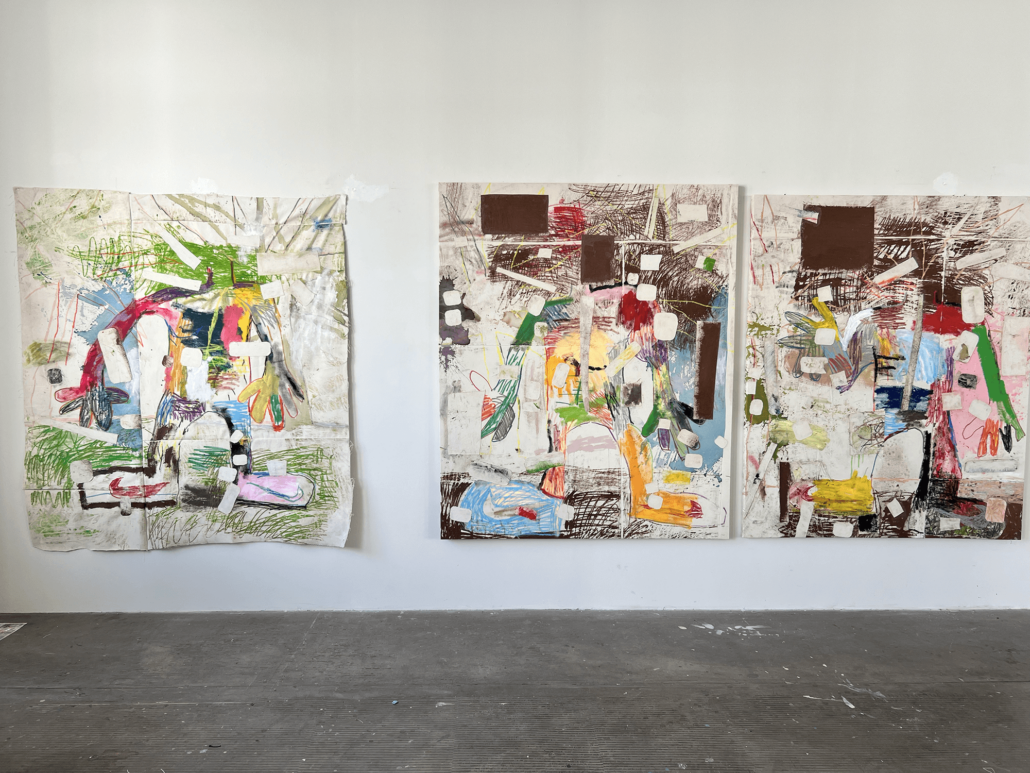
Installation view of ‘Taste of a Distant Paradise’ by Douglas Knesse at Cape Town Art Residency. Photographer: Julia Neves
Knesse often incorporates the Nike Boy in his work, a caricature of himself. “The Nike boy is a symbol of aspiration and achievement in street culture,” he adds, “famous rap artists and sportsmen wear Nike. The brand represents success and fortune, a victory of sorts,” he says, alluding to ancient Greek mythology, where palm leaves symbolised Nike, the winged goddess of victory. The Greeks bestowed palm leaves upon victorious Olympic athletes. The Nike boy represents the artist’s unapologetic pursuit of success, unfazed by the trappings of fame but driven by a relentless desire for greatness.
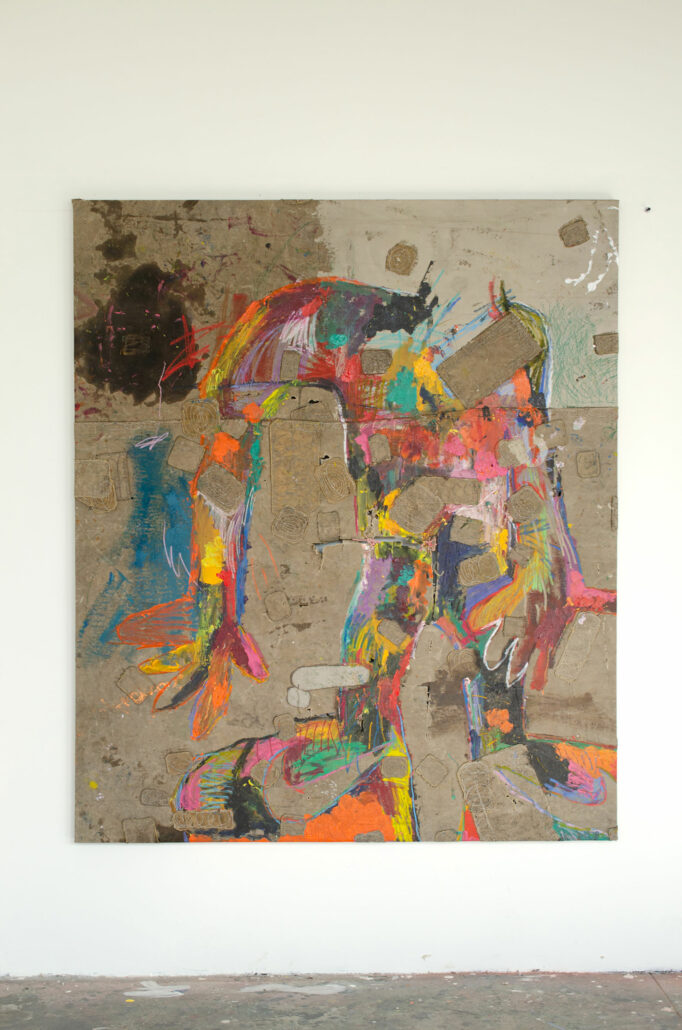
Installation view of ‘Taste of a Distant Paradise’ by Douglas Knesse at Cape Town Art Residency. Photographer: Julia Neves

Installation view of ‘Taste of a Distant Paradise’ by Douglas Knesse at Cape Town Art Residency. Photographer: Julia Neves
Knesse’s paintings blend contrasting elements. He uses old tarps from long haul trucks and new canvas, onto which he works dark and bright colours, almost like a fusing of chaos and order. “My work reflects the myriad experiences and emotions that shape my existence. I believe life is a patchwork of light, darkness, chaos, and order. My art seeks to capture the essence of that duality.” Whether it’s the vibrant colours of pastels and neon or the juxtaposition of old and new, his paintings mirror the complexity of the human experience. While his choice of colours remains steadfast, he experiments with various canvases, each serving as a unique conduit for his artistic expression, intersecting with his overall vision in distinct ways.
‘Selecting materials is a deliberate and thoughtful process for me. I use old patchworked tarpaulin from long-haul trucks, imbuing these with rejuvenated life.” Each material possesses inherent qualities and associations; Knesse patches new canvases as if placing a bandaid over them, hiding their vulnerability, giving them strength and resilience, as is his philosophy. Ultimately, his material choices are integral to the storytelling aspect of the artist’s work. They offer layers of meaning and depth, inviting viewers to engage with the artwork on multiple levels and uncover new nuances with each encounter. Through this interplay of colour and material, Knesse strives to create a rich and immersive artistic experience that resonates with audiences on both an intellectual and emotional level.
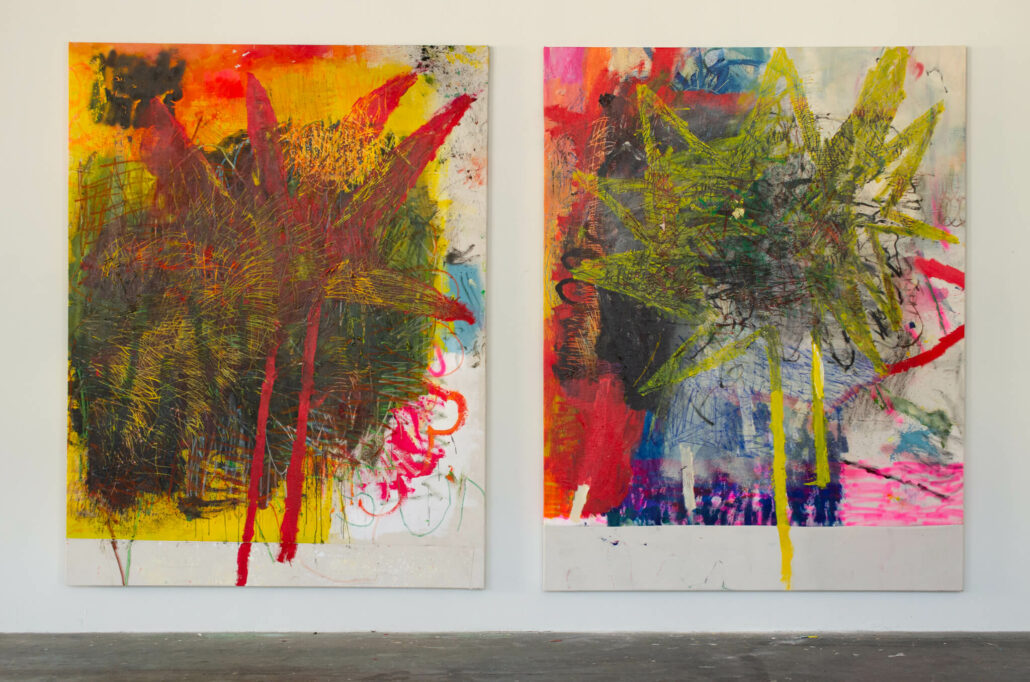
Installation view of ‘Taste of a Distant Paradise’ by Douglas Knesse at Cape Town Art Residency. Photographer: Julia Neves
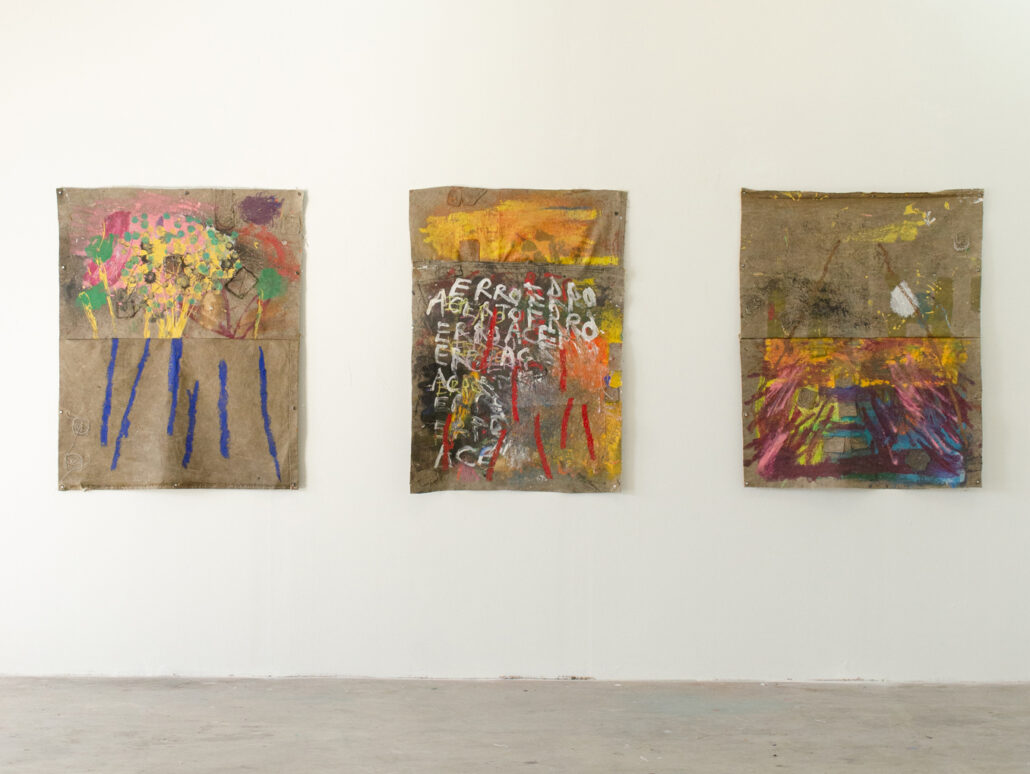
Installation view of ‘Taste of a Distant Paradise’ by Douglas Knesse at Cape Town Art Residency. Photographer: Julia Neves
I asked him about his experience at the Cape Town Art Residency. “Exhibitions are an integral part of my artistic journey – they allow me to share my vision and connect with like-minded individuals. The natural light in my studio here and the light in Cape Town, when combined with the beauty of South Africa and the people, has been inspiring. With each new opportunity, I strive to push the boundaries of my creativity and challenge myself to evolve as an artist.
As our conversation draws close, I’m left with a profound admiration for this deeply contemplative artist. In a world fraught with chaos and uncertainty, his unwavering faith and unyielding determination serve as a beacon of hope – a reminder that, through art, we can transcend our limitations and create a brighter, more beautiful world.
For more information, please visit Cape Town Art Residency.
Suzette Bell-Roberts is the Co-founder and Digital Editor of ART AFRICA magazine.
